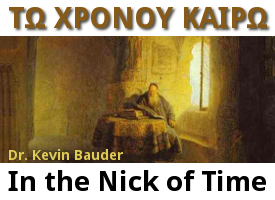Reflections on Republocrat: Oppression and the Left
| [amazon 1596381833 thumbnail] |
These reflections concern Carl Trueman’s Republocrat, Chapter 1. (For notes on the foreword and introduction, see A Serialized Review). Two questions were on my mind as I approached Chapter 1: (a) Is Trueman really a political liberal? (b) Does he accurately understand the conservatism he left behind?
Two themes comprise Chapter 1. Theme 1 is expressed in the chapter title, “Left Behind”: how those of “Old Left” (Trueman’s term) political views are now homeless because liberalism has been “hijacked by special interest groups” (p. 14). Theme 2 makes the first interesting: how Left thought about oppression developed from the 19th century to the present.
The chapter is divided into eight sections.
- (Introductory paragraphs, p.1-2)
- A Brief History of the Old Left (p. 2-5)
- The Strange Love Affair of the Intelligentsia with Marxism (p. 5-6)
- Success and Failure: the Road to Redefinition (p. 6-8)
- Mr. Marx Meets Dr. Freud: the Changing Face of Oppression (p. 9-11)
- How Authenticity Made the Left Inauthentic (p. 11-15)
- Evangelicals and the New Left (p. 15-17)
- Conclusion (p. 17-19)
Discussion
Ralph Reed Plans Major Evangelical Election Turnout
Body
“Evangelical leader and former Christian Coalition leader Ralph Reed is back with a major new push designed to get religious voters into the booths on Election Day.”
Discussion
People of God: Segregation
 Read the series so far.
Read the series so far.
In the Old Testament, the terms people and nation are used interchangeably. Both terms have a significant ethnic component in their definition. In normal usage, a people or nation is constituted at least partly by its descent from a mutual ancestor. Assyrians descended from Asshur. Moabites were the children of Moab. Ammonites were sired by Benammi. Whatever other factors might enter into the description of a people or nation, its solidarity rests in its union with a common forebear.
Identifiable nations developed as a consequence of the division of languages at the tower of Babel. Prior to Babel, humanity functioned as a single people (Gen. 11:6). God used the division of languages to separate humanity into family groups that were divided, not only linguistically and ethnically, but also geographically (Acts 17:26).
These observations have sometimes been used to support a policy of racial segregation, often expressed in terms of a ban against interracial marriage. If this policy were limited to the Ku Klux Klan or the Posse Comitatus, it would hardly be worth noticing. Significant portions of evangelicalism and fundamentalism, however, have occasionally attempted to use Acts 17:26 and the division of nations at Babel to justify racial separation. For example, early editions of the Dake Annotated Reference Bible included a list of thirty reasons for segregation of the races after Acts 17:26. During the early 1960s, Bob Jones, Sr. preached (and his university subsequently distributed) an entire sermon justifying segregation, with Acts 17:26 as his pivotal proof text. Similar arguments were heard from supporters of Pillsbury Baptist Bible College when, under the presidency of Joseph Rammel, that school enforced a ban against interracial dating.
Discussion
Voter woes: Black Christians waver over choice for next president
Body
Black Christians waver over choice for next president
“When President Obama made the public statement on gay marriage, I think it put a question in our minds as to what direction he’s taking the nation”
Discussion
Gay Advocates Cook Up Chick-Fil-A Fairy Tale
Body
“[I]t appears the facts are that the company’s anti-discrimination policy remains just as it was months ago”
Discussion